Description
The instruction for medical use
of Co-Prenessa® medicine
the Trade name
of Co-Prenessa®
the International unlicensed name
Is not present
the Dosage form
of the Tablet of 2 mg / 0.625 mg and 4 mg / 1.25 mg
Structure
One tablet contains
for a dosage 2 mg / 0.625 mg:
active agents: a perindoprila erbumin 2 mg,
indapamid 0.625 mg
for a dosage of 4 mg / 1.250 mg:
active agents: perindoprila erbumin 4 mg,
indapamid 1.250 mg
excipients: Calcii chloridum hexahydrate, lactoses
monohydrate, krospovidon, cellulose microcrystalline, Natrii hydrocarbonas, silicon the dioxide colloidal hydrated magnesium stearate
the Description
of the Tablet of round shape of white or almost white color, slightly biconvex, with a facet and an engraving of the short line on one party (for a dosage of 2 mg / 0.625 mg).
Tablets of round shape of white or almost white color, slightly biconvex, with risky on one party and a facet (for a dosage of 4 mg / 1.25 mg).
Pharmacotherapeutic group
the Drugs influencing a system renin-angiotensin. AKF inhibitors in a combination with others of a preparatma. AKF inhibitors in a combination with diuretics. Perindopril in a combination with diuretics.
The ATX C09BA04 code
the Pharmacological
Pharmacokinetics Pharmacokinetic Properties properties of a perindopril and indapamid do not change in comparison with their separate use.
Perindopril
Vsasyvaniye and metabolism
After intake perindoprit quickly is absorbed. Bioavailability of drug 65 – 70%. The half-life period of a perindopril in plasma is 1 h Perindopril is hydrolyzed with formation of the perindoprilat which is AKF inhibitor. Other products of metabolism are inactive. The maximum concentration (Cmax) of the perindoprilat in blood plasma is reached in 3-4 h. Meal reduces transformation of a perindopril in perindoprilat, and, therefore, and its bioavailability therefore the drug is recommended to be taken once a day, in the morning before a breakfast.
Distribution
Communication between a dose of a perindopril and its exposure in plasma is linear. The volume of distribution (Vd) of the free perindoprilat is close to 0.2 l/kg. Linking of the perindoprilat with proteins of blood plasma, generally with AKF, makes 20% and depends on concentration of drug.
VyvedeniePerindoprilat is brought from an organism through kidneys, elimination half-life (T1/2) of its free fraction makes about 17 h that allows to reach steady state in 4 days.
The pharmacokinetics in special clinical cases
At elderly patients and also at patients with renal and heart failure, removal of the perindoprilat slows down. Selection of a dose is carried out taking into account degree of a renal failure (clearance of creatinine (CC)). At dialysis the clearance of a perindopril is 70 ml/min.
At patients with cirrhosis the hepatic clearance of an initial molecule of a perindopril slows down twice. However the number of the formed perindoprilat does not decrease therefore selection of a dose is not required.
Indapamid
Vsasyvaniye
Indapamid is quickly and completely absorbed from digestive tract. Cmax in plasma is reached approximately in 1 hour after reception.
Distribution
Linking with proteins of plasma makes 79%. Repeated administration of drug does not lead to its accumulation in an organism.
Removal
Elimination half-life (T1/2) makes 14 – 24 hours (on average 18 hours). It is removed, generally with urine (70% of a dose) and a stake (22%) in the form of inactive metabolites.
The pharmacokinetics in special clinical cases
Pharmacokinetics of an indapamid does not change at patients with a renal failure.
The pharmacodynamics
of Co-Prenessa® – a combination perindoprit, inhibitor the angiotensin-the converting enzyme (ACE) and an indapamid – chlorsulfamoilovy diuretic. Pharmacological effect of drug is caused by properties of each of components and additive synergism of both components at their combination.
The action mechanism
Connected with perindoprily:
Perindopril – AKF inhibitor which catalyzes transformation of angiotensin I into angiotensin II – the substance having vasoconstrictive properties. Besides, AKF stimulates secretion of Aldosteronum and strengthens disintegration of vasodilating compound of bradykinin to inactive heptapeptides. It leads to decrease in secretion of Aldosteronum thereof, by the principle of feedback, the activity of renin in blood plasma increases. At prolonged use the general peripheric resistance of vessels (GPRV) that is caused, generally action decreases by vessels in muscles and kidneys. At the same time the delay of salts and water or reflex tachycardia is not observed. Perindopril has hypotensive effect and at patients with the low or normal level of renin in blood.
Action of a perindopril is caused by activity of a metabolite of the perindoprilat. Perindopril reduces load of heart, having vasodilating effect on veins (apparently, by change of metabolism of prostaglandins), preloading as a result decreases and final diastolic pressure decreases, reducing OPSS that leads to
decrease in an afterload.
Perindopril causes pressure decrease of filling in the left and right ventricles of heart, decrease in OPSS, increase in warm emission and cardiac index, strengthening of a regional blood-groove in muscles. As a result considerably results of exercise tolerance test improve.
Connected with indapamidy:
Indapamid – sulphonamide derivative with an indole ring, pharmacological connected with thiazide group of diuretics. Has ability to inhibit a sodium reabsorption in a cortical segment of a Henle’s loop. Causes dose-dependent increase in discharge of sodium and chlorides and, to a lesser extent potassium and magnesium with urine, thereby strengthening a diuresis and having hypotensive effect.
Characteristics of hypotensive action
Irrespective of age of patients of Co-Prenessa® has dose-dependent hypotensive effect on the systolic and diastolic arterial blood pressure (ABP) as in a prone position, and standing. The antihypertensive effect lasts 24 hours. The lowering of arterial pressure is reached less than in 1 month Bech of a tachyphylaxis. The termination of treatment does not cause sharp effect.
Studying assessment of the impact of a combination was perindoprit also by an indapamida on the hypertrophy of a left ventricle (HLV), in comparison with enalapril at monotherapy (by results ekho-KG), proved advantages of a combination of a perindopril and an indapamid in decrease in the index of mass of a left ventricle (by results ekho-KG) and decrease in the ABP in comparison with enalapril at monotherapy.
Perindopril is effective at any degree of arterial hypertension: soft, moderate and heavy. Decrease in diastolic and systolic arterial blood pressure occurs as in a prone position, and standing. The maximum of hypotensive effect is observed in 4-6 h after single dose and remains for 24 h.
High degree of residual inhibition of activity of AKF in 24 h after administration of drug – about 80% is noted.
At the patients responding to treatment, normalization of the ABP is reached in 1 month and remains without development of reflex tachycardia. Drug withdrawal does not lead to hypertensive reaction. Perindopril has vasodilating properties, restores elasticity of the main arteries, adjusts gistomorfologichesky changes in resistant arteries and causes regression of a hypertrophy of a left ventricle of heart. Prescribing, if necessary, of thiazide diuretic leads ment of synergy reaction. The combination of AKF inhibitor and thiazide diuretic reduces risk of development of a hypopotassemia which is characteristic of intake of diuretic drugs.
At monotherapy indapamidy the long-term hypotensive effect remaining 24 h is noted. Hypotensive properties are shown in doses at which indapamid has mild diuretic effect.
The efficiency of hypotensive action of an indapamid is proportional to its ability to improve elasticity of arteries, to reduce OPSS and resistance of arterioles.
Indapamid promotes reduction of a hypertrophy of a left ventricle of heart.In extreme concentration the hypotensive efficiency of thiazide diuretics or other corresponding connections reaches the plateau and does not increase any more, while side effect of drugs becomes more and more expressed. If treatment is inefficient, then it is not necessary to increase a drug dose.
At short-term, medium-term and long-term long-term treatment of patients with hypertensia indapamid does not influence lipidic exchange (i.e. the content of triglycerides, LPNP, LPVP) and carbohydrate metabolism, even at patients with the accompanying diabetes.
Indications
– essential arterial hypertension
the Route of administration and doses
Oral administration.
The drug Co-Prenessa® is taken on 1 tablet a day, it is desirable in the morning before food. If arterial blood pressure does not decrease within 1 month of treatment, then it is necessary to double a dosage.
Elderly patients
At elderly patients indicators of content of creatinine in plasma have to be corrected taking into account age, weight and a floor. To patients of advanced age drug is appointed on condition of normal function of kidneys, at the same time it is necessary to control extent of decrease in the ABP.
Patients with a renal failure
Drug is contraindicated to patients with a renal failure of heavy degree (KK less than 60 ml/min.).
In a moderate renal failure (KK of 30-60 ml/min.) the maximum daily dose – one tablet Co-Prenessa® a day.
≥ 60 ml/min. of correction of a dose are not required to patients with KK.
Patients with abnormal liver functions
Drug is contraindicated to patients with a heavy liver failure. In a moderate liver failure of dose adjustment it is not required.
Side effects
Perindopril has inhibiting effect on a system renin-angiotensin-Aldosteronum (RAAS) and reduces removal of potassium ions kidneys against the background of reception of an indapamid. At 2% of patients against the background of use of the drug Co-Prenessa® the development of a hypopotassemia was noted.
Frequency of side reactions which can arise during therapy is specified in a type of the following gradation: very often (& gt, 1/10), it is frequent (& gt, 1/100, & lt, 1/10), infrequently (& gt, 1/1000, & lt, 1/100), is rare (& gt, 1/10,000, & lt, 1/1000), is very rare (& lt, 1/10,000), frequency is not established (frequency cannot be counted according to available data).
From the system of a hemopoiesis:
very seldom
– thrombocytopenia, a leukopenia/neutropenia, an agranulocytosis, aplastic anemia, hemolytic anemia
– in certain clinical situations (patients after transplantation of a kidney, the patients who are on a hemodialysis) – anemia
from central nervous system:
often
– paresthesias, a headache, dizziness, vertigo, weakness
infrequently
– the sleep disorder, lability of mood,
is very rare
– confusion of consciousness
from sight:
often
– a disorder of vision
from an organ of hearing:
often
– sonitus
from a cardiovascular system:
infrequently
– decrease in the ABP (including orthostatic hypotension)
is very rare
– disturbances of a heart rhythm (including bradycardia, ventricular tachycardia, an atrial fibrillation)
– stenocardia and a myocardial infarction, perhaps, owing to excess decrease in the ABP at patients of group of high risk
– lengthening of an interval of QT on the electrocardiogram
from a respiratory system:
often
against the background of use of AKF inhibitors there can be dry cough, is long remaining during administration of drugs of this group and disappearing after their cancellation. In the presence of this symptom it is necessary to consider an iatrogenic etiology.
– an asthma
infrequently
– a bronchospasm
very seldom
– eosinophilic pneumonia, rhinitis
from digestive system:
often
– a constipation, dryness of a mucous membrane of an oral cavity, nausea, pains in epigastriums, anorexia, vomiting, an abdominal pain, a dysgeusia, dyspepsia, diarrhea
very seldom
– pancreatitis
– cytolytic or cholestatic hepatitis
frequency is not established
– hepatic encephalopathy at patients with a liver failure
– increase in level of liver enzymes
from a gepatobiliarny system:
very seldom: the cholestasia or cytolytic hepatitis
– in case of a liver failure, exists a possibility of approach of hepatic encephalopathy
from integuments:
often
– skin rash, an itching, makulopapulezny rash
infrequently
– a Quincke’s disease of the face, lips, extremities, a mucous membrane of language, a glottis and/or throat, a small tortoiseshell
– hypersensitivity reactions at the patients predisposed to bronkhoobstruktivny and allergic reactions
– a hemorrhagic vasculitis
– at patients with acute form of a system lupus erythematosus the deterioration in a course of the disease
– purple
very seldom
– a mnogoformny erythema, a toxic epidermal necrolysis, Stephens-Johnson’s syndrome
– reactions of the increased photosensitivity is possible
from a musculoskeletal system:
often
– spasms of muscles
from an urinary system:
infrequently
– a renal failure
Very seldom
– an acute renal failure
from a reproductive system:
Infrequently
– impotence
Laboratory indicators:
– the hypopotassemia especially significant for the patients belonging to risk group
– the hyponatremia and a hypovolemia leading to dehydration and orthostatic hypotension
– increase in concentration of uric acid and glucose in blood during administration of drug
– slight increase of concentration of creatinine in urine and in blood plasma, passing after therapy cancellation, is more often at patients with a renal artery stenosis, at treatment of arterial hypertension diuretics and in case of a renal failure
– a hyperpotassemia, is more often passing
seldom
– a hypercalcemia
other:
infrequently
– the increased sweating.
General disturbances:
seldom
an asthenia
not often
perspiration
of the Contraindication
– hypersensitivity to a perindopril, an indapamid, AKF inhibitors and sulfonamides and other compound components of drug
– a Quincke’s disease against the background of therapy by AKF inhibitors in the anamnesis
– a hereditary or idiopathic Quincke’s disease
– heart failure in a decompensation stage (in lack of basic therapy)
– the profound or moderate renal failure (KK & lt, 60ml/mines)
– a hemodialysis
– a heavy liver failure
– hepatic encephalopathy
– a hypopotassemia
– a concomitant use of antiarrhytmic means which can cause ventricular arrhythmia like “pirouette”
– pregnancy and the period of a lactation
– children’s and teenage age up to 18 years
the Medicinal interactions
At the combined intake of lithium and AKF inhibitors are noted cases of reversible increase in concentration of lithium in serum and development of toxic effect of lithium. The accompanying intake of thiazide diuretics can increase already available risk of development of toxicity and enhance toxicity of lithium. The combined reception of a perindopril and drugs of lithium is not recommended, but at its need it is necessary to control carefully lithium content in blood serum.
Baclofenum enhances expressiveness of hypotensive effect (it is necessary to control the ABP level and to adjust a dose of Co-Prenessa®.
Non-steroidal anti-inflammatory drugs (NPVS), including acetylsalicylic acid in a dose 3g/put, inhibitors of cyclooxygenase-2 (TsOG-2) and non-selective NPVS, reduce hypotensive effect of AKF inhibitors. Besides, it is noted that NPVS and AKF inhibitors render additive effect on increase in level of potassium in blood plasma, leading to deterioration in function of kidneys. The specified action has reversible character, but the acute renal failure, especially at patients with a renal failure, for example, at elderly patients in rare instances can develop or at an obezvozhennost. At such patients before an initiation of treatment it is necessary to estimate functional activity of kidneys and, if necessary, to provide sufficient hydration of an organism. At the beginning of combination therapy and also periodically during therapy, it is necessary to carry out monitoring of function of kidneys.
The combined intake of tricyclic antidepressants and neuroleptics with AKF inhibitors can lead to a further lowering of arterial pressure and increase in risk of developing orthostatic hypotension.
Corticosteroids and tetrakozaktid reduce hypotensive action of Co-Prenessa® (the delay of water and salt caused by action of corticosteroids).
The concomitant use of hypotensive drugs of other groups can lead to strengthening of hypotensive effect.
AKF inhibitors reduce the potassium loss caused by diuretics. Kaliysberegayushchy diuretics (for example, Spironolactonum, Triamterenum, in monotherapy or in a combination), can lead potassium additives or kaliysoderzhashchy substitutes of salt to significant increase in content of potassium in serum. If the accompanying use in view of the expressed hypopotassemia is shown, drugs have to be used with extra care and with frequent monitoring of content of potassium in serum and the ECG.
Joint intake of AKF inhibitors and antidiabetic drugs (insulin, sulfonamides) can lead to strengthening of hypoglycemic effect. Approach of episodes of a hypoglycemia is extremely rare (improvement of tolerance of glucose leads to decrease in need for insulin).
At the combined intake of AKF inhibitors with Allopyrinolum, cytostatics or immunodepressants, system corticosteroids or procaineamide the risk of development of a leukopenia increases.
AKF inhibitors can exponentiate hypotensive effect of some anesthetizing drugs.
Preliminary therapy by diuretic drugs in high doses, especially at patients with decrease in OCK and/or electrolytic disturbances, at the beginning of therapy by AKF inhibitor can lead to the significant decrease in the ABP and risk of approach of hypotension.
The patients undergoing injection therapy by gold drugs have rare messages about nitritoidny reactions (face reddening, nausea, vomiting and hypotension) (aurotimalat gold) and the accompanying treatment by AKF inhibitors.
Antiarrhytmic drugs of the class IA (quinidine, hydroquinidine, Disopyramidum), antiarrhytmic drugs of class III (Amiodaronum, dofetilid, ibutilid, a bretylium, sotalol), some neuroleptics (Chlorpromazinum, tsiamemazin, levomepromazinum, thioridazine, trifluoperazin), benzamides (amisulpirid, Sulpiridum, sultoprid, tiaprid), phenyl propyl ketone derivatives (Droperidolum, a haloperidol), other neuroleptics (Pimozidum), bepridit, sizaprid, difemanit, erythromycin (intravenously), galofantrin, mizolastin, moxifloxacin, pentamidine, sparfloksatsin, Vincaminum (intravenously), methadone, astemizol, terfenadin in a combination with indapamidy increase risk of developing ventricular arrhythmia (in particular, Bouveret’s ventricular disease like “pirouette”). The hypopotassemia contributes to the development of this effect in this connection constant control of level of potassium, timely correction if necessary and monitoring of an interval of QT is necessary.
At the simultaneous use of an indapamid and drugs reducing potassium level (Amphotericinum B intravenously, glyuko- and mineralokortikoida at system use, tetrakozaktid, the stimulating depletive) risk of development of a hypopotassemia increases. It is necessary to control potassium concentration and, if necessary, to adjust it. In need of prescribing of depletive it is necessary to use drugs without promoting effect on motility of intestines.
At joint purpose of Co-Prenessa® with cardiac glycosides it is necessary to consider that the hypopotassemia can strengthen toxic effect of cardiac glycosides. It is necessary to control the level of potassium and the ECG and, if necessary, to adjust therapy.
Lactic acidosis against the background of intake of metformin is connected, apparently, with a functional renal failure which is caused by action of an indapamid. It is not necessary to use metformin if the level of serumal creatinine exceeds 1.5 mg/dl (135 µmol/l) at men and 1.2 mg/dl (110 µmol/l) – at women.
In the considerable dehydration of an organism caused by intake of diuretic drugs the risk of developing a renal failure against the background of use of iodinated contrast agents in high doses increases. Before use of iodinated contrast agents it is necessary to carry out rehydration.
At simultaneous use with salts of calcium the increase in content of calcium in blood plasma as a result of decrease in its excretion with urine is possible.
At use of Co-Prenessa® against the background of constant use of cyclosporine the creatinine level in plasma even increases at the normal state of water and electrolytic balance.
The special
indications Perindopril Neytropeniya/agranulotsitoz Risk razvitiya of a neutropenia against the background of intake of AKF inhibitors has dose-dependent character and depends on the accepted medicine and presence of associated diseases. The neutropenia seldom arises at patients without associated diseases, however the risk increases at patients with a renal failure, especially against the background of general diseases of connective tissue (including, a system lupus erythematosus, a scleroderma).
After cancellation of AKF inhibitors the clinical signs of a neutropenia pass independently.
With extra care it is necessary to apply perindoprit at patients with general diseases of connective tissue, against the background of reception of immunosuppressive means, Allopyrinolum or procaineamide and at their combined use, especially at patients with an initial renal failure. Some patients had serious infectious diseases, in some cases, resistant to intensive antibiotic treatment. When assigning a perindopril such patients are recommended to control periodically quantity of leukocytes in blood. Patients have to report to the doctor about any symptoms of infectious diseases (for example, a tonsillitis, fever).
The hypersensitivity / a Quincke’s disease (Quincke’s edema)
At intake of AKF inhibitors, including also perindoprit, development of a Quincke’s disease of the face, extremities, lips, language, a glottis and/or throat in rare instances can be observed. At emergence of symptoms the administration of drug of Co-Prenessa® has to be immediately stopped, and the patient has to be observed until symptoms of hypostasis do not disappear completely. If hypostasis affects only a face and lips, then its manifestations usually take place independently though antihistamines can be applied to treatment of its symptoms. The Quincke’s disease which is followed by a laryngeal edema can lead to a lethal outcome. Hypostasis of language, phonatory bands or a throat can lead to obstruction of airways. At emergence of such symptoms it is necessary to enter immediately subcutaneously epinephrine (adrenaline) in cultivation 1:1000 (0.3 or 0.5 ml) and/or to provide passability of airways. At persons of negroid race with the burdened anamnesis the risk of a Quincke’s disease is increased in comparison with other races.
At patients in whose anamnesis the Quincke’s edema which is not connected with intake of APF inhibitors was noted the risk of its development at administration of drugs of this group can be increased.
In rare instances against the background of therapy by AKF inhibitors the Quincke’s disease of intestines develops. At the same time at patients the abdominal pain as the isolated symptom or in combination with nausea and vomiting, in certain cases without the previous Quincke’s disease of the person is noted and at normal activity of S-1 enzyme of esterase. The diagnosis is established by means of a computer tomography of belly area, ultrasonography or at the time of surgical intervention. Symptoms disappear after the termination of intake of AKF inhibitors. At the patients with pain in a stomach receiving AKF inhibitors when carrying out the differential diagnosis it is necessary to consider a possibility of development of a Quincke’s disease of intestines.
Anaphylactoid reactions when performing desensitization
Are available separate messages about development of long, life-threatening anaphylactoid reactions in the patients receiving AKF inhibitors during the desensibilizing therapy by poison of hymenopterous insects (a bee, a wasp). AKF inhibitors need to be applied with care at the patients with the burdened allergological anamnesis or tendency to allergic reactions undergoing procedures of desensitization. It is necessary to avoid AKF inhibitor use to the patients receiving an immunotherapy poison of hymenopterous insects. Nevertheless, anaphylactoid reaction can be avoided by temporary cancellation of AKF inhibitor not less than for 24 h prior to the procedure of desensitization.
Anaphylactoid reactions when carrying out an aferez of LDL
In rare instances at the patients receiving AKF inhibitors when carrying out an aferez of LDL with use of a dextran of sulfate can develop life-threatening anaphylactoid reactions. For prevention of anaphylactoid reaction it is necessary to stop temporarily therapy by AKF inhibitor before each procedure of an aferez.
A hemodialysis
At the patients receiving AKF inhibitors when carrying out a hemodialysis with use of high-flowing membranes (for example, AN69®) noted anaphylactoid reactions. Therefore it is desirable to use a membrane of other type or to apply antihypertensive of other pharmacotherapeutic group.
Kaliysberegayushchy diuretics and drugs of potassium
As a rule, combined use of a perindopril and kaliysberegayushchy diuretics and also drugs of potassium and kaliysoderzhashchy substitutes of edible salt is not recommended.
Cough
Against the background of therapy by AKF inhibitor can arise dry cough. Cough it is long remains against the background of administration of drugs of this group and disappears after their cancellation. At emergence in the patient of dry cough it is necessary to remember possible communication of this symptom with intake of AKF inhibitor. If the doctor considers that therapy by AKF inhibitor is necessary for the patient, administration of drug can be continued.
The risk of arterial hypotension and/or renal failure (at patients with chronic heart failure, disturbances of water and electrolytic balance)
At some morbid conditions can be noted considerable activation of RAAS, especially at the expressed hypovolemia and decrease in content of electrolytes of blood plasma (against the background of a saltless diet or long intake of diuretics), at patients with initially low ABP, a renal artery stenosis (including, bilateral), chronic heart failure or cirrhosis with hypostases and ascites.
Use of AKF inhibitors causes blockade of RAAS and therefore can be followed by the sharp decrease in the ABP and/or increase in concentration of creatinine in blood plasma demonstrating development of a functional renal failure. These phenomena are more often observed at reception of the first dose of drug or within the first two weeks of therapy. Sometimes these states develop sharply. In such cases when resuming therapy it is recommended to use a combination of a perindopril and an indapamid in lower dose and then to gradually increase a dose.
Patients of advanced age
before administration of drug of Co-Prenessa® it is necessary to estimate functional activity of kidneys and the maintenance of potassium ions in blood plasma. At the beginning of therapy the dose of drug is selected, considering extent of decrease in the ABP, especially in case of decrease in OCK and loss of electrolytes. Similar measures allow to avoid sharp decrease in the ABP.
Atherosclerosis
Risk of arterial hypotension exists at all patients, however the extra care should be observed, using drug at patients with coronary heart disease and insufficiency of cerebral circulation. At such patients the treatment should be begun with low doses of a combination of a perindopril and an indapamid.
Patients with renovascular hypertensia
Method of treatment of renovascular hypertensia is revascularization. Nevertheless, use of AKF inhibitors has favorable effect at patients as expecting surgical intervention and when performing surgical intervention cannot be carried out. At patients with the diagnosed or expected renal artery stenosis the treatment should be begun with lower doses of a combination of a perindopril and an indapamid. At some patients the functional renal failure which disappears at drug withdrawal can develop.
Other risk groups
At patients with chronic heart failure (the IV functional class on classification of NYHA) and patients with diabetes of 1 type (danger of spontaneous increase in maintenance of potassium ions) treatment has to begin with lower doses of a combination of a perindopril and an indapamid and under constant medical control.
Patients with arterial hypertension and coronary heart disease should not stop intake of beta blockers: the combination perindoprit and the indapamida has to be used together with beta blockers.
Patients with diabetes
When prescribing the drug Co-Prenessa® the regular control of concentration of glucose in blood plasma is necessary for patients with the diabetes receiving hypoglycemic means for intake or insulin within the first month of therapy.
Ethnic distinctions
Perindopril, as well as other AKF inhibitors, obviously, has less significant hypotensive effect at patients of negroid race in comparison with representatives of other races. Perhaps, this distinction is caused by the fact that at patients with arterial hypertension of negroid race the low activity of renin is more often noted.
Surgical intervention / the General anesthesia
can lead Use of AKF inhibitors for the patients who are exposed to surgical intervention using the general anesthesia to the significant decrease in the ABP, especially when using the means for the general anesthesia having antihypertensive effect. It is recommended to stop intake of AKF inhibitors of long action, including perindoprit, for 12 h before surgical intervention.
&





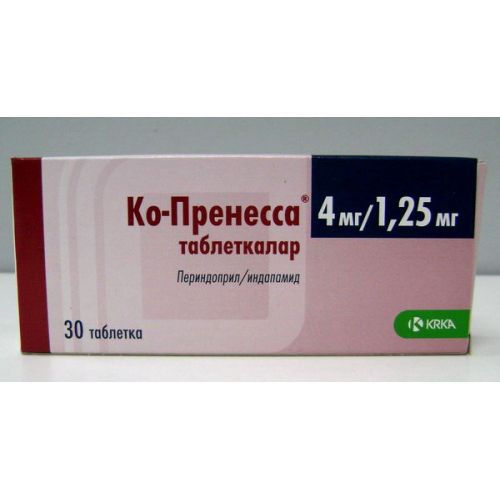
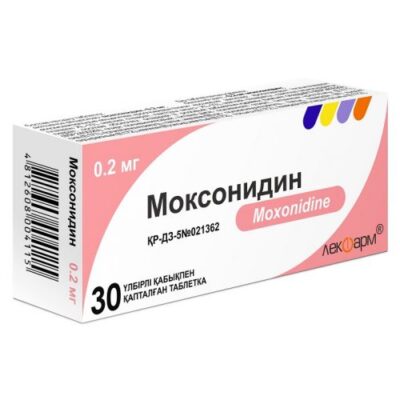
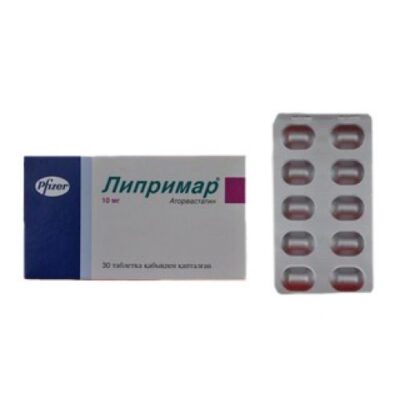
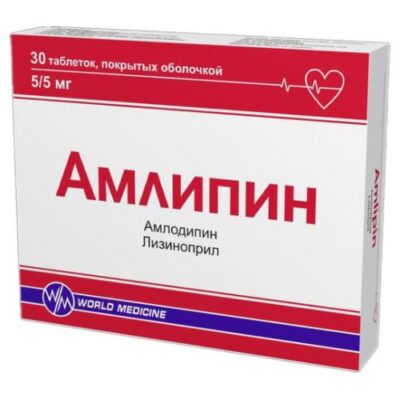
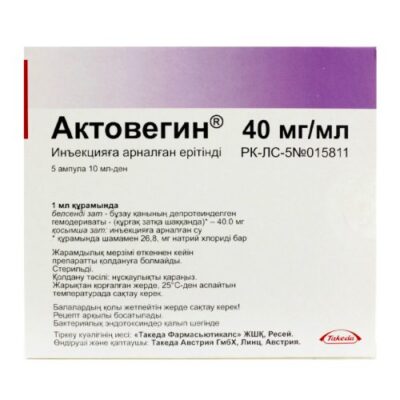
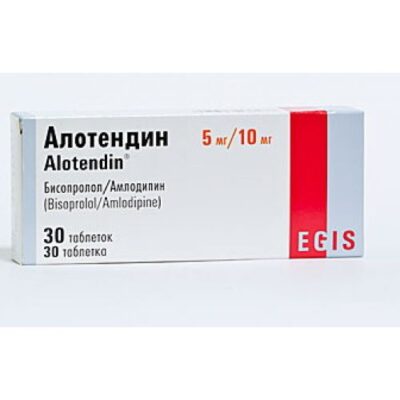
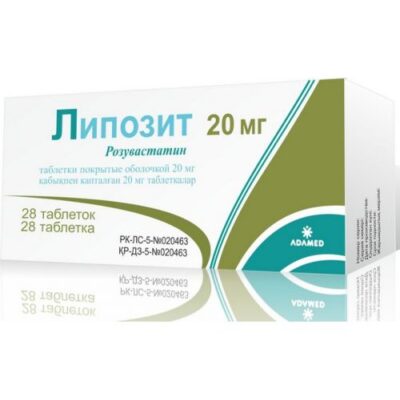
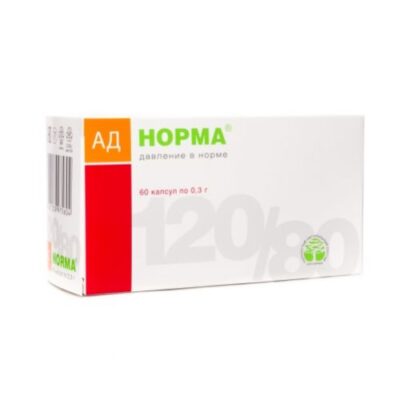
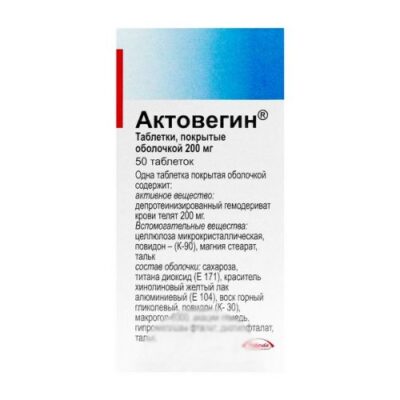
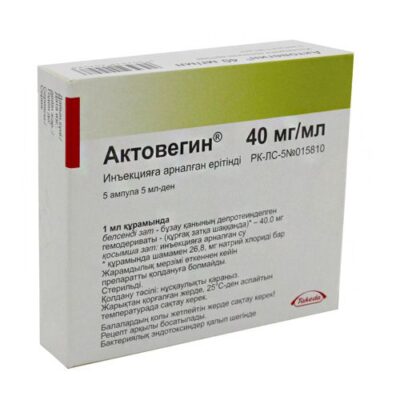
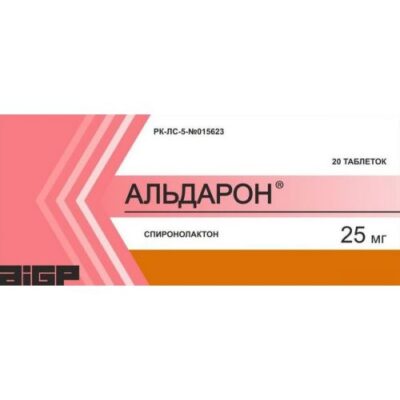






Reviews
There are no reviews yet.